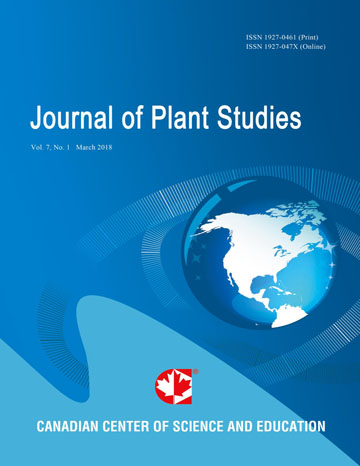Inhibitory Effect of Several Mangifera indica Cultivar Leaf Extracts on the Formation of Advanced Glycation End Products (AGEs)
- Kimihisa Itoh
- Tetsuya Matsukawa
- Kanasa Minami
- Mamoru Okamoto
- Norimichi Tomohiro
- Kosuke Shimizu
- Shin’ichiro Kajiyama
- Yuichi Endo
- Hideaki Matsuda
- Shigeru Shigeoka
Abstract
As a part of our ongoing research to find novel functions in mango leaves, we have reported that the methanolic extract of pruned old dark green mango leaf (Mangifera indica ‘Irwin’) exhibited inhibitory effects on the formation of advanced glycation end products (AGEs) in nonenzymatic glycation of albumin. The purpose of this study was to find other mango cultivars with more potent activity in this regard. We examined the inhibitory effect of seventeen mango (Mangifera indica) cultivar leaf extracts on AGEs formation. We also investigated the relationship between the inhibitory activity of the extracts and the contents of their active components, 3-C-β-D-glucosyl-2,4,4’,6-tetrahydroxybenzophenone (1), mangiferin (2) and chlorophyll (3). On the basis of the evaluation of the inhibitory activity of mango cultivar leaf extracts, the HPLC determination of the contents of 1 and 2, and the spectrophotometric determination of 3, it was found that almost all extract showed a significant activity, and the content of 2 and 3 detected in each was similar. In contrast, AGEs formation inhibition tended to be higher as the content of 1 in the leaf extracts increased. This is the first report of phytochemical analysis of compounds 1, 2 and 3 in various cultivars of mango leaf. From the phytochemical point of view, these results suggest that the pruned leaves of any cultivar of Mangifera indica except ‘Chiin Hwang No. 1’ and ‘Kyo Savoy’ may be useful for the preparation of natural ingredients with inhibitory activity of AGEs formation.
- Full Text:
 PDF
PDF
- DOI:10.5539/jps.v9n2p33
Index
- AGRICOLA
- CAB Abstracts
- CABI
- CAS (American Chemical Society)
- CNKI Scholar
- Elektronische Zeitschriftenbibliothek (EZB)
- Excellence in Research for Australia (ERA)
- Google Scholar
- JournalTOCs
- Mendeley
- Open policy finder
- Scilit
- Standard Periodical Directory
- Technische Informationsbibliothek (TIB)
- WorldCat
Contact
- Joan LeeEditorial Assistant
- jps@ccsenet.org
